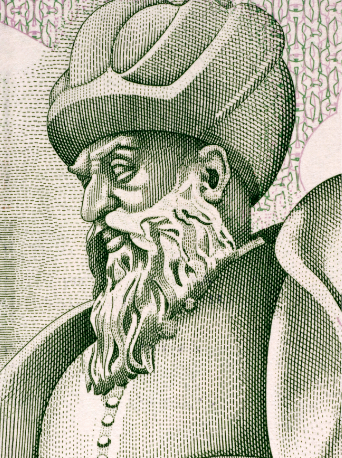Born in 1489 in Kayseri, Sinan is known by the nickname “Koca Sinan” (Great Sinan). He was discovered during the reign of Yavuz Sultan Selim and brought to Istanbul to be nurtured. At that time, Sinan was 22 years old and had already created various works in his village. He lived around Aksaray and Süleymaniye in Istanbul.
Sinan, who made his mark with his art in every corner of Anatolia, as well as in Mecca, Medina, Sofia, Aleppo, and Buda, is also known as the chief architect of humility. Sinan’s modesty, preferring to use pseudonyms instead of his name in the inscriptions of his works, is as important as his art and contributes to his beloved status.
The Chief Architect
Sinan, our greatest architect of all time, quickly developed his skills and left a significant mark on the brightest era of the Ottoman Empire. His real talent was honed through observations made during his travels. Sinan served as the chief architect during the reigns of three sultans: Selim II, Suleiman the Magnificent, and Murad III.
He joined the Ottoman army as an infantryman (Janissary). He served as a cavalryman (mounted Sekban) during Yavuz Sultan Selim’s campaigns in Iran and Egypt, and during Suleiman the Magnificent’s campaigns in Belgrade and Rhodes. Later, he participated in the Battle of Mohacs, the German Campaign, and the Campaigns of the Iraqayn, where he saw Tabriz and Baghdad. His work on a bridge over the Prut River in Black Bogdan within 13 days during one of the campaigns earned the sultan’s appreciation.
Furthermore, by repairing the dome of Hagia Sophia and constructing reinforced walls around it, he played a significant role in preserving the monument to this day.
His Architecture
Sinan was not only a genius architect but also a great scientist. His works contributed significantly to science with new applications in acoustics (sound science), soil studies, and fluid dynamics.
His original work in acoustics, especially in the interior and exterior designs of Süleymaniye, is noteworthy. The sound from the pulpit can be heard unchanged everywhere. Sinan achieved this by using smooth columns to minimize the reflection and weakening of sound.
Sinan is an art genius. He elevated Turkish architecture to an unparalleled level.
The great artist not only paid attention to technical precision in his works but also aimed to imbue them with beauty and aesthetics. He achieved aesthetic harmony with walls and elephant feet, and semi-domes around the large dome.
Sinan developed a distinctive Ottoman architectural style. The main feature of this style is the consistent use of domes as the covering element in buildings. The master craftsman pushed the possibilities of using domes to their limit. The most significant feature of this architecture is the novel style given to the dome. Although domes were used in Islamic, Byzantine, Roman, and Renaissance architectures, no architecture has endowed them with a central, unifying feature as Sinan’s works have.
His Works
Sinan has 375 known works. Some of these include 81 mosques, 51 small mosques (masjids), 55 madrasas (Islamic schools), 22 mausoleums, 3 hospitals, 8 bridges, 35 palaces, 20 caravanserais, and 46 baths.
Two significant works made Sinan famous: a bridge he built over a swamp during the Campaigns of the Iraqayn and the Hüsrev Pasha Complex in Aleppo. He was appointed as the chief architect after these works.
Three monumental works mark the stages of Sinan’s ascent after becoming the chief architect: the Şehzade Mosque in Istanbul as his apprenticeship work, the Süleymaniye Mosque as his journeyman work, and the Selimiye Mosque in Edirne as his masterpiece.
Journeyman Work: Süleymaniye Mosque
Sinan, referring to it as his journeyman period work, opened the Süleymaniye Mosque in 1557 with a ceremony attended by the sultan. The construction of the mosque, situated on one of Istanbul’s seven hills, took seven years.
The genius architect applied the two semi-domed plan, previously tackled in the Beyazıt Mosque and Hagia Sophia, here as well. He succeeded in constructing the largest dome in Istanbul after Hagia Sophia, with a diameter of 27 meters. In this work, Sinan created a different space by covering the side areas next to the central space, which is covered by a large dome, with five smaller domes of different sizes. He harmoniously integrated the central and side spaces.




